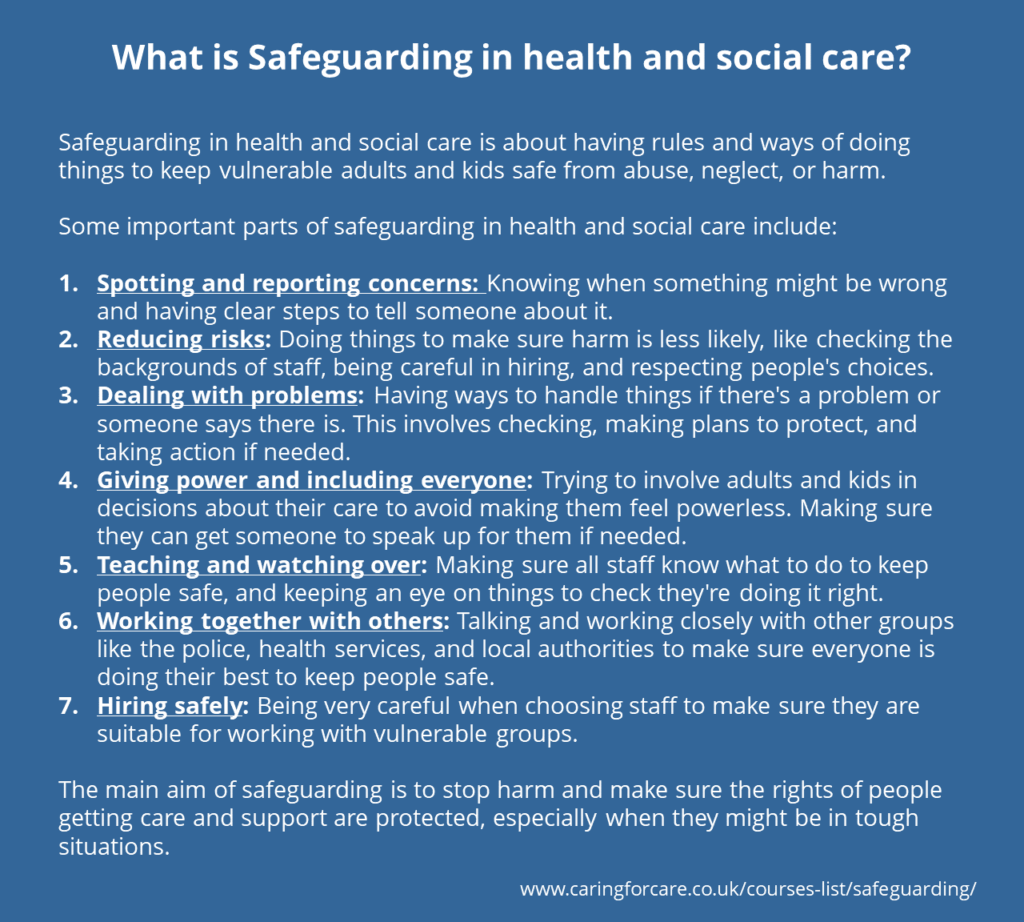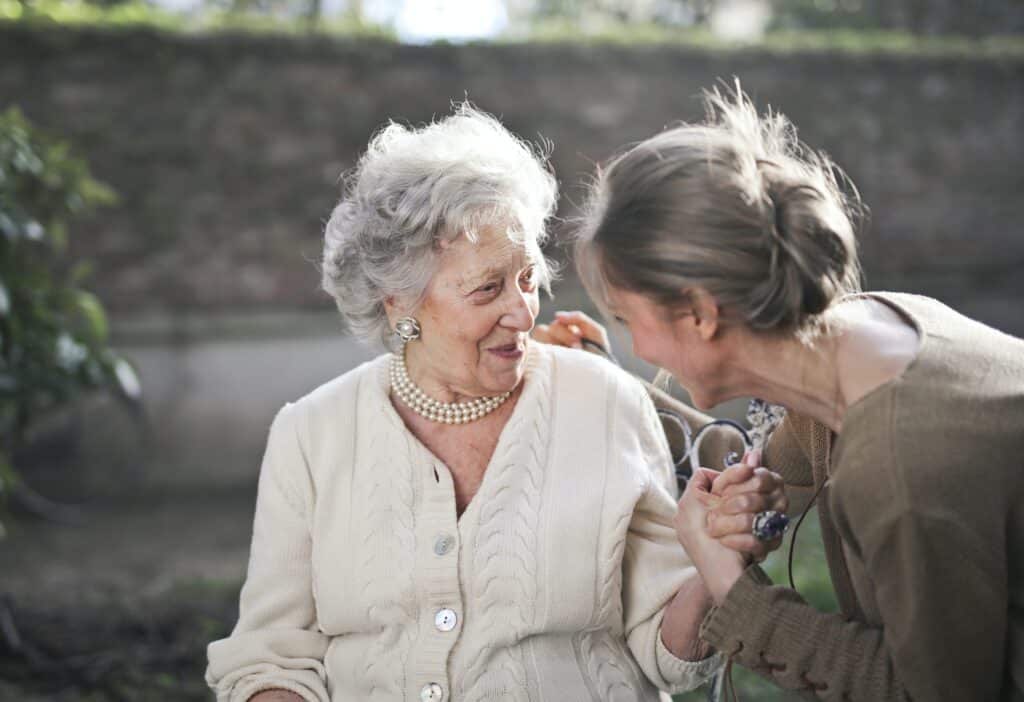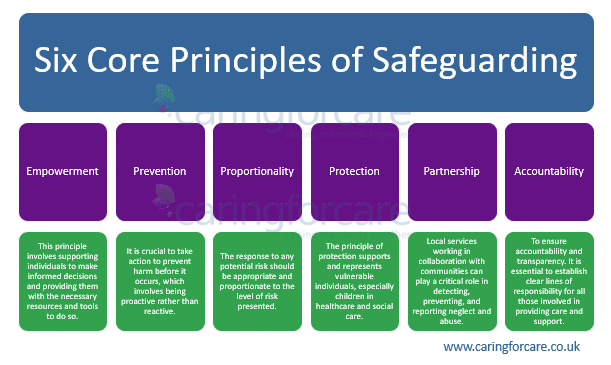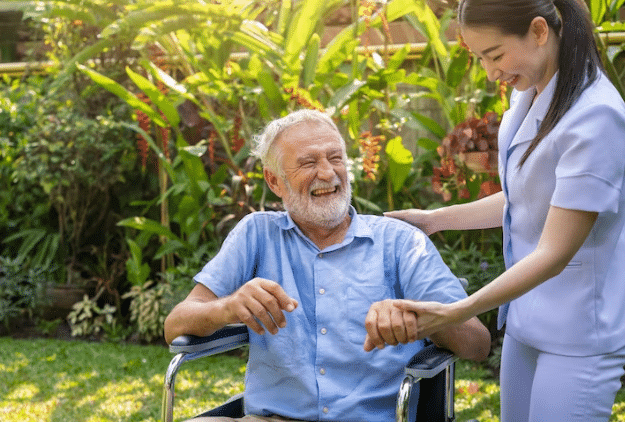What is Safeguarding? Find Out Laws and Regulations.

Safeguarding meaning is a term that relates to protecting children, people under the age of 18, and vulnerable adults, from harm and is specifically relevant to companies or individuals working to deliver care in a variety of forms.
It also relates to the promotion of child welfare. It involves protecting the vulnerable from maltreatment and preventing impairment of a child’s health and development.
Safe care is crucial for safeguarding vulnerable individuals and preventing harm and abuse.
Having a safeguarding policy in place helps to protect and promote the welfare of the vulnerable. It also gives assurance to staff as well as parents and carers.
What we covered
- What is Safeguarding?
- Safeguarding Process
- Safeguarding Vulnerable Adults
- Safeguarding Children
- Six Core Principles of Safeguarding
- Safeguarding Legislation
- Issues and Complications Associated with Safeguarding
- Ten Reasons to Keep Everyone Safe- Children and Adults
- 10 Different Types of Abuse
- Safeguarding Training Course
What is Safeguarding?
Safeguarding means keeping children and adults safe from abuse, neglects and harm.
Safeguarding in health and social care is about having rules and ways of doing things to keep vulnerable adults and kids safe from abuse, neglect, or harm.
It involves coordinated efforts to ensure those unable to fully safeguard themselves due to age, disability, illness or other barriers can live free from maltreatment or exploitation.
Safeguarding aims to uphold people’s basic rights to physical and emotional safety and wellbeing.
It seeks to maintain quality of life even amidst dependencies on care and support systems. Core elements of safeguarding include:
- Risk prevention and reduction through ongoing assessments
- Protection through advocacy and representation
- Multi-agency collaboration and information sharing
- Investigating concerns promptly and appropriately
- Ensuring accountability at individual and systemic levels
Robust safeguarding requires strong partnerships between social services, healthcare, law enforcement, education, communities, and regulatory bodies.
With comprehensive policies, preparation, awareness, and responsiveness, harm can be minimised.

What is Safeguarding Adults?
Safeguarding adults refers to a set of measures taken to protect individuals aged 18 and over who may be vulnerable to abuse, neglect, or harm.
Adult safeguarding systems aim to:
- Prevent neglect, physical abuse, emotional abuse, sexual abuse, financial exploitation, human trafficking, radicalization, sexual exploitation, female genital mutilation, cyberbullying, and other harms.
- Ensure timely interventions with appropriate protections based on assessments of risks and needs.
- Provide advocacy and support services that represent the individual’s rights and interests.
- Uphold concepts of dignity, respect, autonomy and consent when possible.
- Identify and address factors leading to recurring systemic abuse or neglect.

With rigorous adult safeguarding protocols, vulnerable seniors, those with disabilities, and dependent adults can retain quality of life with reduced risks of mistreatment by caregivers, family, strangers, or institutions.

What is Safeguarding Children?
Safeguarding children refers to systems protecting those under 18 from harm.
This covers:
- Stopping and dealing with child mistreatment at home or in places like schools
- Lowering the chances of sexual, physical, or emotional harm or neglect
- Keeping kids safe when there are accusations in families, foster homes, or schools
- Supporting the move from harmful situations to protective services when needed
- Offering continuous help for physical and mental health
- Making sure kids’ rights are respected during investigations
- Keeping an eye on things and having checks to protect young people from those in positions of trust
With good plans for keeping kids safe, societies make sure children have the right to grow up without avoidable harm and to do well.
In simple terms, safeguarding means setting up complete systems to stop bad things (harm, neglect, abuse) from happening and to deal with them when they do, especially for those who can’t fully protect themselves.
By being careful, reducing risks, and working together, we can keep people safe and make sure they are well and treated with respect.

“Process is not the enemy.” – Eli Goldratt
Safeguarding Process
Health and social care professionals use safeguard processes to protect children and young people from harm, abuse, or exploitation.
Safeguarding processes requires ongoing risk assessments and reviews to ensure the measures are effective and suitable for the individual’s needs.
These processes involve implementing a set of measures, procedures, and actions to ensure children, young, and adults’ safety and protection.
Settings such as healthcare, social services, education, and childcare commonly use safeguarding processes to protect vulnerable individuals who may be at risk.
The primary aim of a safeguard process is to prevent harm by identifying and reporting concerns promptly.
In addition, safeguarding processes provide support and care to those who have been affected.
Safeguarding processes play a crucial role in promoting the well-being of children and young people and ensuring their protection from harm in all aspects of their lives.

Women were more likely than men to be the subject of a safeguarding concern (63% vs 37%). | Report: 2022-2023
Safeguarding Vulnerable Adults
Vulnerable adults are individuals who require a service of care because of their mental or physical disability, age, or illness.
Individuals aged 18 years or above who are unable to take care of themselves or protect themselves from harm or exploitation.
Safeguarding vulnerable adults prevents abuse of all types including physical, sexual, psychological, discriminatory, financial or material, and acts of omission.
Abuse from partners, children, relatives, friends, neighbours, and even care workers can occur in both domestic and institutional environments.

The majority of children (61%) who were the subject of a child protection plan were aged 10 or under.
Safeguarding Children
Children with disabilities are the most at risk when it comes to keeping them safe.
This is because they might have trouble with their bodies, senses, or learning, needing help from parents or caregivers all the time or part of the time.
Some people with disabilities find it hard to share their feelings or needs because of problems with talking or moving around.
They might need lots of different services to get what they need. This makes them more likely to face abuse or neglect, and they might struggle to tell others about their experiences.
The Department for Education deals with all aspects of safeguarding children.
They have developed practice guidance for several circumstances, including Local Safeguarding Children Boards (LSCBs) and professional carers. This guidance can be found and downloaded here.
You can read more on ways of ending child sexual exploitation for better lives. We discussed in the post about CSE, policies and regulation and how the UN treats this problem.
Join us in learning the principles, practices, and responsibilities of safeguarding. Equip yourself with the knowledge to recognise and respond to signs of abuse or neglect. Enrol now and contact our Course Advisors at enquiries@caringforcare.co.uk or call 01782 563333.
Six Core Principles of Safeguarding
The six principles of safeguarding are empowerment, prevention, proportionality, protection, partnership, and accountability.

These six core principles of safeguarding aim to ensure the protection of vulnerable individuals from harm, abuse, or neglect:
- Empowerment: This principle involves supporting individuals to make informed decisions and providing them with the necessary resources and tools to do so.
- Prevention: It is crucial to take action to prevent harm before it occurs, which involves being proactive rather than reactive.
- Proportionality: The response to any potential risk should be appropriate and proportionate to the level of risk presented.
- Protection: The principle of protection is centered on providing support and representation for those in greatest need, particularly when it comes to working with children in health and social care settings.
- Partnership: Local services working in collaboration with communities can play a critical role in detecting, preventing, and reporting neglect and abuse. This could be children, young, and adult who are facing abuse or neglect.
- Accountability: To ensure accountability and transparency. It is essential to establish clear lines of responsibility for all those involved in providing care and support.
You can also visit our blog post: Safeguarding Assessment Strategy to compare six principle of the CARE ACT 2014 with 6 principles of safeguarding.

The Care Act 2014 is the primary legislation in England that outlines the legal framework for safeguarding adults.
Protection Through Legislation
The Care Act 2014
The Care Act 2014 made rules that local authorities need to follow. In short, they have to stop and fix abuse and neglect quickly. If they think adults who need care might be in danger, they must ask about it.
They also have to create a Safeguarding Adults Board to make sure the plan to keep people safe works. They need to check how things are going and get someone to help and speak up for adults if needed.
The Care Act 2014 has important rules to make sure people are well, needs don’t get worse, and care focuses on the person.
It says health and social care services should work together, checks who can get help, plans care, supports those taking care of others, keeps adults safe, and gives information.
Keeping an eye on the market and rules ensures good care.
The Act wants to make care better, help people stay independent, and protect the rights of individuals and those who care for them.
The full Care Act 2014 can be viewed here at the legislation.gov.uk website.
Children Act 2004
The government published the first Children Act in 1989 and then revised it in 2004 to strengthen the Act. This was, in many ways, a vital bit of legislation that not only created the post of Children’s Commissioner for England but also placed responsibility on local authorities to appoint a director of children’s services. To view the full Children Act 2004, click here.
The key provisions of the Children Act 2014 include establishing local safeguarding children boards, promoting cooperation between agencies to improve child welfare, setting out duties for local authorities to protect children, and emphasizing the importance of children’s views and participation in decision-making.
The Children Act 2004 aims to ensure that children are protected from harm, receive appropriate support and services, and have their well-being prioritized by relevant authorities and professionals.
Mental Capacity Act 2005
The Mental Capacity Act brought about in 2005, aims to protect those aged 16 and over who lack the mental capacity to make judgments about their own care and personal treatment.
This act applies to vulnerable people who suffer from dementia, severe learning disabilities, brain injuries, mental health condition, strokes, and accident or anesthetic-induced unconsciousness.
The purpose of the Mental Capacity Act is to ensure that those who lack the capacity to make a decision for themselves have to undergo a capacity assessment.
Care providers must provide vulnerable people with information in a format they can understand to enable them to make informed decisions.
The Mental Capacity Act 2005 has key provisions that establish a presumption of capacity, require decisions in the best interests of individuals lacking capacity, and promote the least restrictive options.
It allows for advanced decisions and lasting power of attorney, safeguards against deprivation of liberty, and provides support through Independent Mental Capacity Advocates.
The Act aims to protect the rights and welfare of individuals who lack capacity while ensuring decision-making in their best interests.
To read the full Mental Capacity Act 2005 click here.
Deprivation of Liberty Safeguards (DoLS)
Following on from the Mental Capacity Act 2005, are the Deprivation of Liberty Safeguards, or DoLS. These safeguards aim to ensure that care homes, hospitals, or supported living do not inhibit the freedom of vulnerable people who reside in them.
Deprivation of Liberty Safeguards (DoLS) has important parts like:
- assessments and permissions,
- checking mental capacity,
- thinking about what’s best for the person,
- having someone independent review,
- doing regular checks,
- making sure rights and advocacy are considered, and
- reporting duties.
DoLS makes sure that taking away someone’s freedom is legal, needed, and regularly checked, protecting the rights and well-being of individuals.
For example, the responsible authorities have to provide a vulnerable person with a representative who has the right to challenge a deprivation of liberty, which they can then review and monitor regularly.

Everyone has a responsibility to safeguard adults and children at risk of harm.
Learn More: See All our Face to Face Safeguarding Courses For Health and Social Workers.
Issues and Complications Associated with Safeguarding
As with all aspects of care, there can be issues and complications associated with safeguarding. One of these issues is the maladministration of medication.
For instance, some medicines might be wrongly used to manage the difficult behaviour of vulnerable people. There have been cases where staff have inappropriately used drugs.
The usual problem is about not handling medicines well. Surprisingly, about 70% of residents face some kind of mistake with their medicines every day, as per recent research from the Department of Health.
Giving medicine in the wrong amount, at the wrong time, or with the wrong medicine can happen. Although this usually doesn’t cause much harm, it can lead to serious problems.
For more information about the maladministration of medication, a booklet produced by The Royal Pharmaceutical Society concerning the handling of medicines in social care can be viewed and downloaded here.
Your journey towards safeguarding starts here.
Join us in learning the principles, practices, and responsibilities of safeguarding. Equip yourself with the knowledge to recognise and respond to signs of abuse or neglect. Enrol now and contact our Course Advisors at enquiries@caringforcare.co.uk or call 01782 563333.
Understanding 10 Different Types of Abuse
Safeguarding is all about keeping ourselves and others safe from harm. It’s important to know about the different types of abuse so that we can recognize them and take action to prevent them. Here are ten types of abuse explained in a way that relates to safeguarding, with examples for each:

1. Physical Abuse
Safeguarding involves protecting ourselves and others from physical harm. This means making sure no one hits, kicks, or hurts us or others in any way. For example, if someone at school is being physically aggressive and hurting others, it’s important to report it to a trusted adult.
2. Emotional Abuse:
Safeguarding includes promoting emotional well-being and protecting against emotional harm. This means treating each other with kindness, respect, and empathy. If someone is constantly saying mean things or making others feel bad about themselves, it’s crucial to seek help from a trusted adult.
3. Sexual Abuse:
Safeguarding involves preventing and addressing any form of unwanted or inappropriate sexual behavior. This means understanding that no one should touch another’s private parts without permission or force us to do things we are uncomfortable with. If someone experiences any form of sexual abuse, it’s essential to tell a trusted adult immediately.
4. Neglect:
Safeguarding requires ensuring that everyone’s basic needs are met, including food, shelter, and care. Neglect happens when someone is not given the things they need to be safe and healthy. For instance, if a child is not receiving proper meals or is left alone without supervision for long periods, it’s important to inform a trusted adult.
5. Bullying:
Safeguarding includes preventing and addressing bullying behaviors. Bullying is when someone repeatedly hurts, threatens, or excludes others. It’s important to stand up against bullying and report it to a trusted adult or teacher. Creating a safe and inclusive environment is essential for safeguarding against bullying.
6. Verbal Abuse:
Safeguarding involves protecting ourselves and others from hurtful words and language. We should always speak to others with kindness and respect. If someone is using mean words or constantly insulting others, it’s important to seek help and support from a trusted adult.
7. Financial Abuse:
Safeguarding includes protecting ourselves and others from financial exploitation. This means that no one should take or use our money or belongings without permission. If someone is taking advantage of someone else’s money or possessions, it’s crucial to tell a trusted adult or caregiver.
8. Discrimination:
Safeguarding promotes fairness and equality for everyone. Discrimination occurs when someone is treated unfairly because of their race, gender, religion, or other characteristics. It’s important to challenge discrimination and create a safe and inclusive environment where everyone is treated with respect and dignity.
9. Cyberbullying:
Safeguarding extends to the online world as well. Cyberbullying is when someone uses technology to hurt, threaten, or humiliate others. It’s important to report any instances of cyberbullying to a trusted adult or teacher, who can provide support and take necessary actions to stop it.
10. Self-neglect:
Safeguarding involves taking care of ourselves and seeking help when needed. Self-neglect happens when we neglect our own well-being, hygiene, or safety. It’s important to reach out to a trusted adult or counselor if we notice someone not taking care of themselves properly.
Safeguarding is everyone’s responsibility. If you see or experience any form of abuse, it’s important to speak up and seek help from a trusted adult. Together, we can create a safe and supportive environment for everyone.

Ten Reasons to Keep Everyone Safe- Children and Adults
1. Protecting Everyone
Safeguarding is important because it helps keep everyone safe from bad things like abuse, harm, and being treated badly. We want to make sure that no one gets hurt and feels scared or sad.
2. Doing the Right Thing
We have a special duty to do something about it when we see someone being treated badly. It’s not okay for anyone to hurt others or make them feel bad. We should always try to help and make things better.
3. Helping People Who Need It
When we all understand how important it is to keep everyone safe, we can help people who have no one else to turn to. By being kind and looking out for others, we can make a big difference in their lives.
4. Building Trust
When we take safeguarding seriously, people trust us more. Trust means that they believe we will take care of them and keep them safe. It’s like having a special bond of friendship and reliability.
5. Following the Rules
Organizations, like charities, have rules they need to follow. One of these rules is to make safeguarding a top priority. It means they have to work really hard to keep everyone safe and show they are doing their best.
6. Stopping Bad Things Before They Happen
Safeguarding helps us prevent bad things from happening in the first place. We look for things that could be dangerous and try to fix them. It’s like wearing a helmet when riding a bike to protect our heads.
7. Speaking Up
Safeguarding means we encourage people to speak up if they see something wrong or if something happens to them. We have special ways to report problems and we promise to listen and help make things right.
8. Helping People Feel Better
If someone has been hurt or treated badly, we want to help them feel better. We offer support, comfort, and resources to help them heal and get stronger again.
9. Teamwork and Cooperation
Safeguarding is not something we do alone. We work together as a team with teachers, parents, friends, and others to keep everyone safe. By sharing information and helping each other, we can be even more successful.
10. Making Our Organization Strong
When we have a strong safeguarding plan, it makes our organization better and more resilient. It means we are prepared for any problems and can handle them well, so we can keep doing the important work we do.
Safeguarding Training Course
Here at Caring for Care, we provide you with a range of safeguarding training opportunities.
Our three-hour, face-to-face courses provide you with working knowledge of safeguarding adults and safeguarding children and are great as a refresher course or for new staff entering the world of care. Additionally, we also run face to face training regarding the Mental Capacity Act (MCA) and Deprivation of Liberty Safeguards (DoLS).
In addition to face-to-face safeguarding training, we also offer a high-quality, CPD accredited e-learning option, which allows you to learn at your own pace.
If you would like to learn more about our safeguarding training options please visit this link. Alternatively, why not call us 01782 563 333 and speak to our friendly and knowledgeable staff.
ADT Healthcare offers a free helpline dedicated to assisting women and families suffering from drug, alcohol and mental health issues.
ADT Healthcare was founded in 2011 by people who overcame drug and alcohol addiction themselves.
References
NSPCC https://www.nspcc.org.uk/preventing-abuse/safeguarding/
NHS http://www.nhs.uk/conditions/social-care-and-support-guide/pages/mental-capacity.aspx
Care Quality Commission http://www.cqc.org.uk/content/safeguarding-people
Social Care Institute for excellence http://www.scie.org.uk/adults/safeguarding/
http://www.scie.org.uk/publications/guides/guide46/commonissues/maladministration.asp
GOV.UK https://www.gov.uk/topic/schools-colleges-childrens-services/safeguarding-children
North Yorkshire Safeguarding Children Board http://www.safeguardingchildren.co.uk/
Let us Help you
We’ll help you find the right course for your needs. Tell us a little bit about your situation and what you would like to achieve.
We’ll get back to you within one working day.
